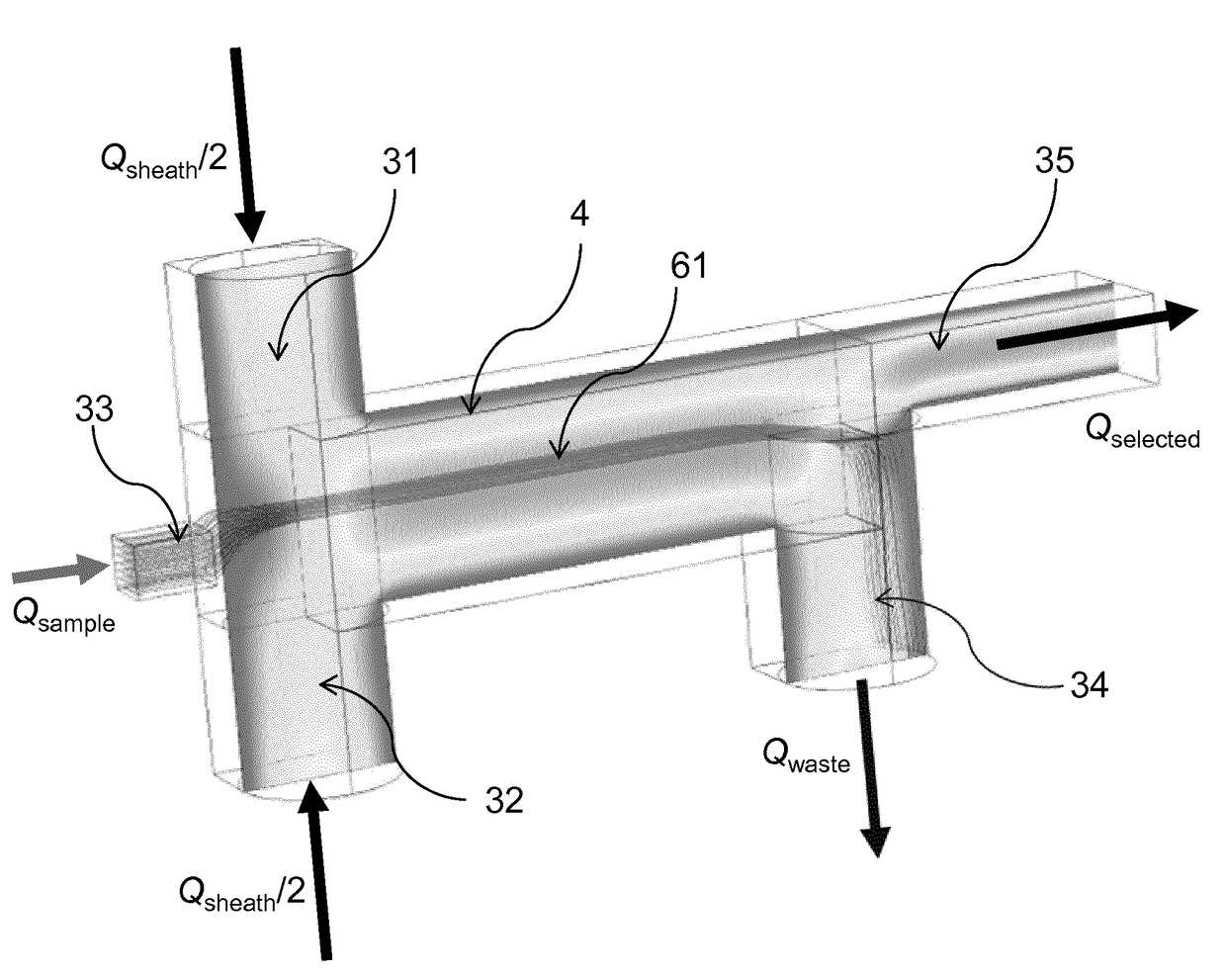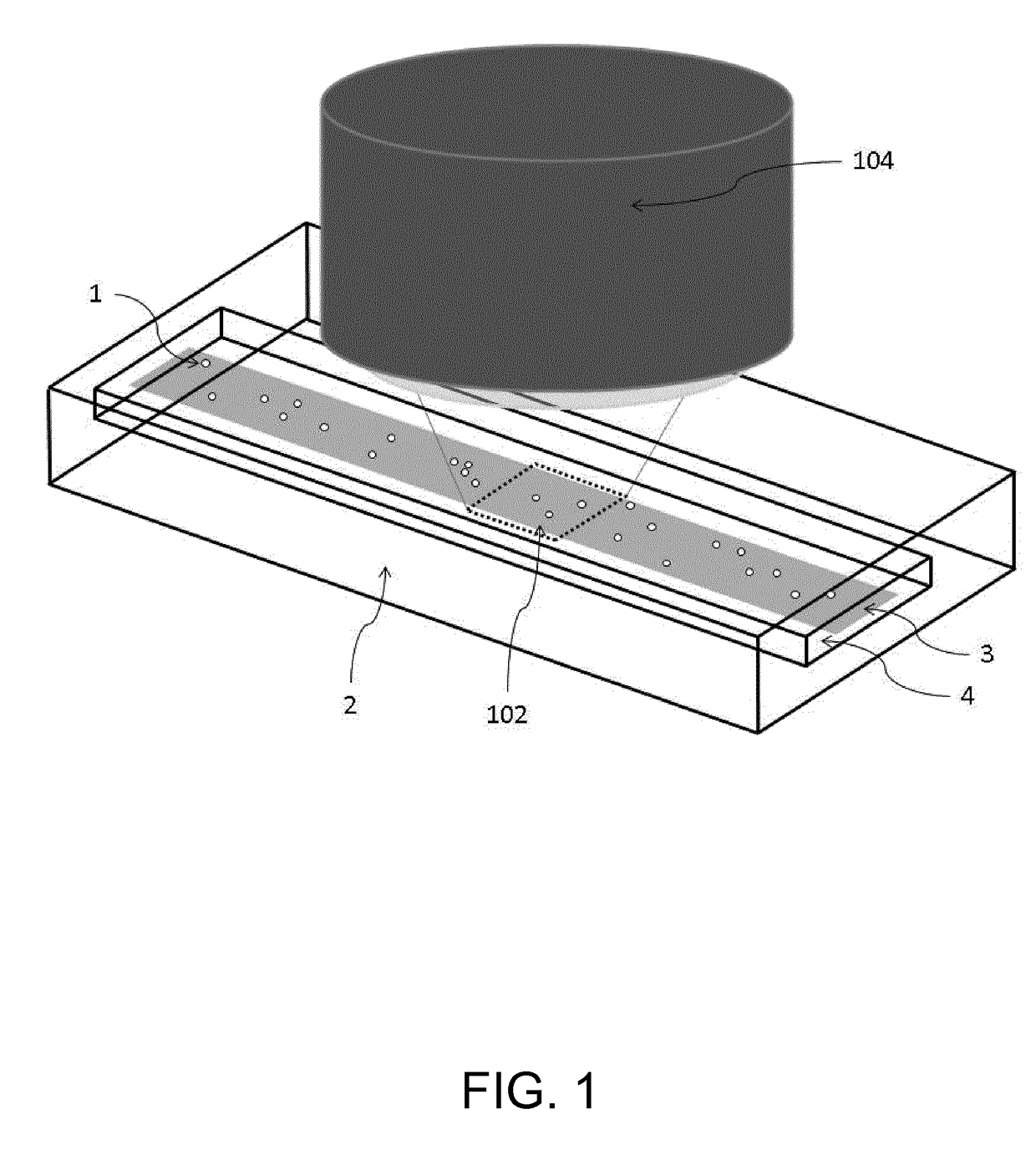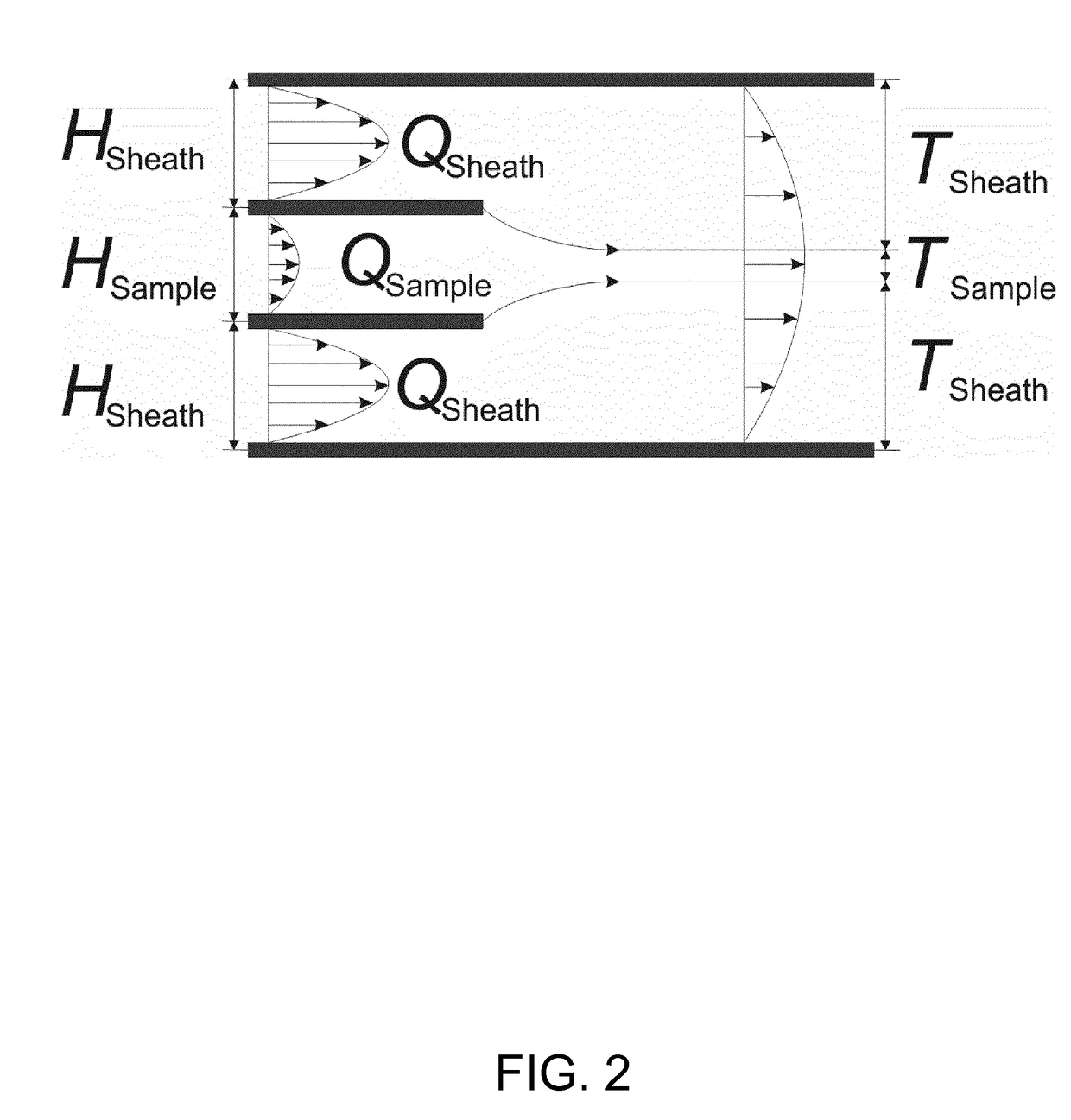Method, device and system for hydrodynamic flow focusing
a technology of hydrodynamic flow and focusing device, which is applied in the field of flow cytometry, can solve the problems of limited depth of focus, unsatisfactory throughput, and limited analysis and sorting capabilities of microfluidic systems
- Summary
- Abstract
- Description
- Claims
- Application Information
AI Technical Summary
Benefits of technology
Problems solved by technology
Method used
Image
Examples
Embodiment Construction
[0079]Referring to the above recitation of the method, apparatus and system of the first, second, third and fourth aspects of the invention, further features of embodiments of the invention will now be described. The optical objective may be arranged to provide a view onto the sample fluid at the inspection zone in a viewing direction which is perpendicular to the common flow direction, and the planar flow of the sample fluid may have a height in said viewing direction, which is smaller than or equal to a depth of focus of the optical objective. Flows of the first and second sheaths fluids may form planar inlets to said inspection zone, each of said planar inlets being preferably wider in a direction perpendicular to the common flow direction than the width of the inspection zone when seen in the plane of each respective planar inlet. The sample fluid and the first and second sheath fluids may be conveyed at a common flow velocity in said common flow direction at the inspection zone...
PUM
 Login to View More
Login to View More Abstract
Description
Claims
Application Information
 Login to View More
Login to View More - R&D
- Intellectual Property
- Life Sciences
- Materials
- Tech Scout
- Unparalleled Data Quality
- Higher Quality Content
- 60% Fewer Hallucinations
Browse by: Latest US Patents, China's latest patents, Technical Efficacy Thesaurus, Application Domain, Technology Topic, Popular Technical Reports.
© 2025 PatSnap. All rights reserved.Legal|Privacy policy|Modern Slavery Act Transparency Statement|Sitemap|About US| Contact US: help@patsnap.com



